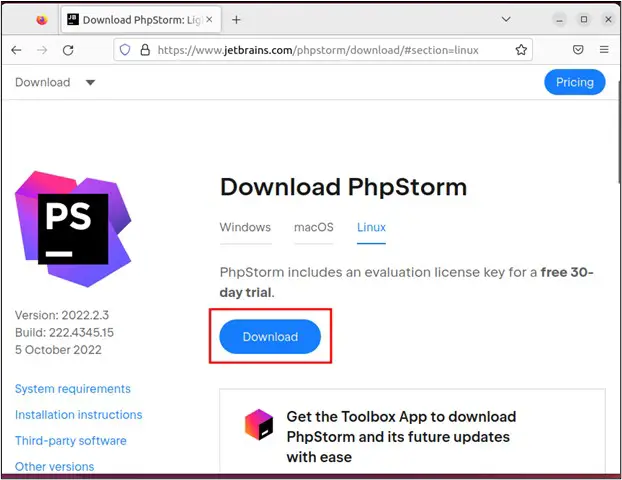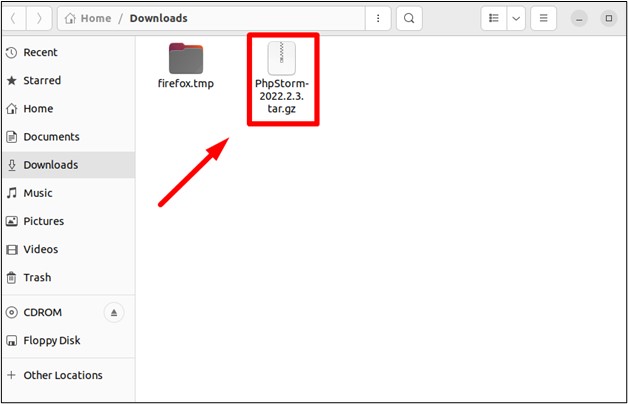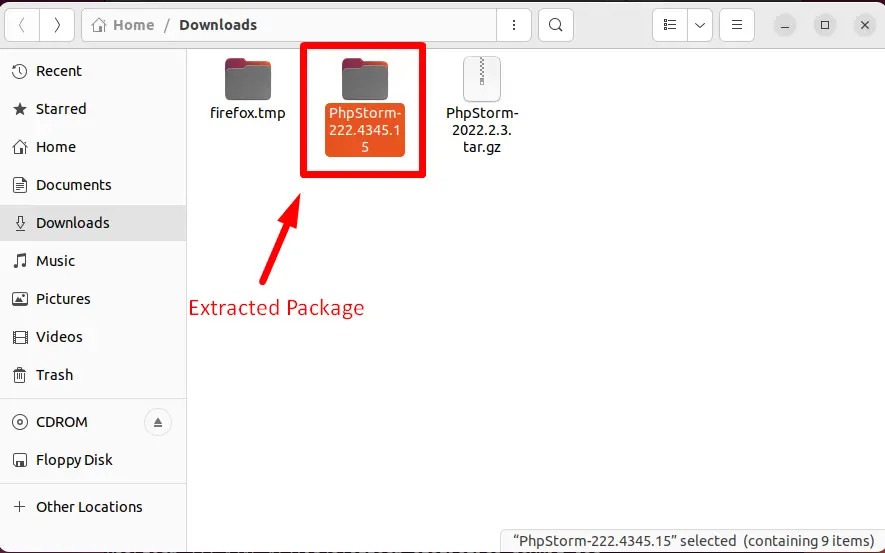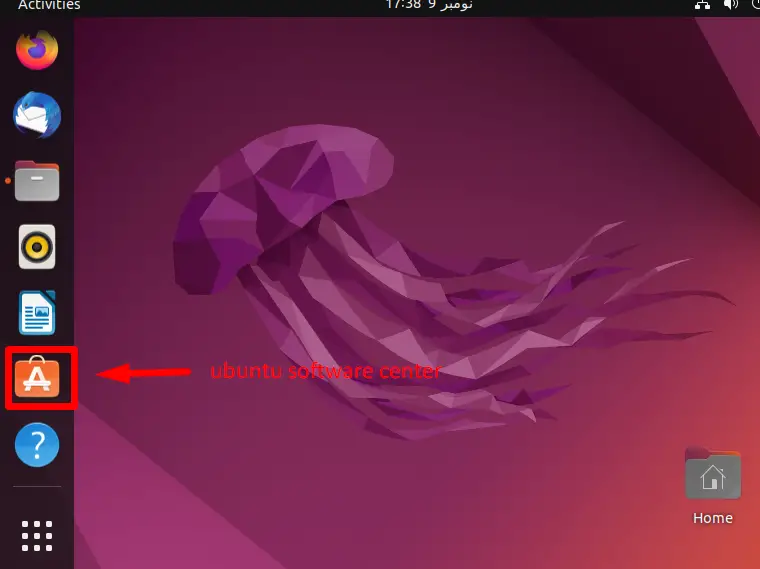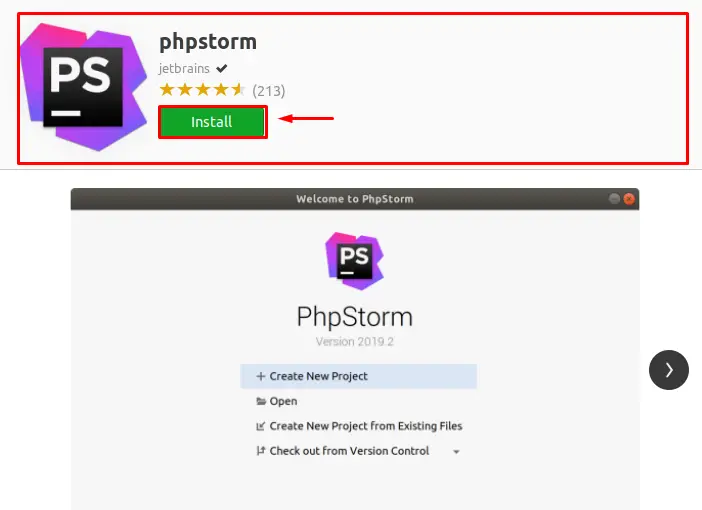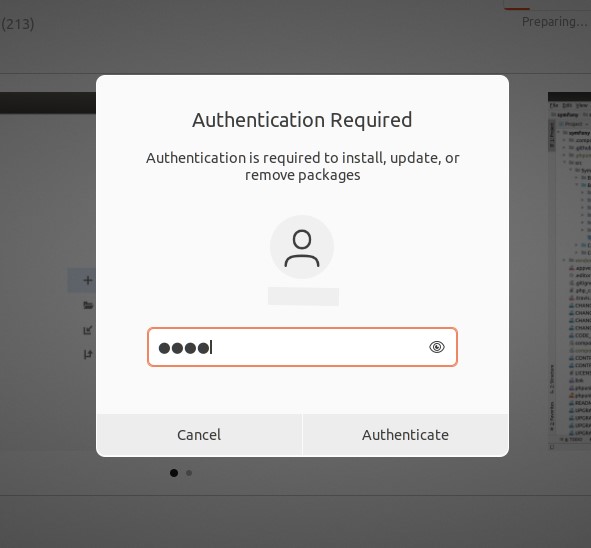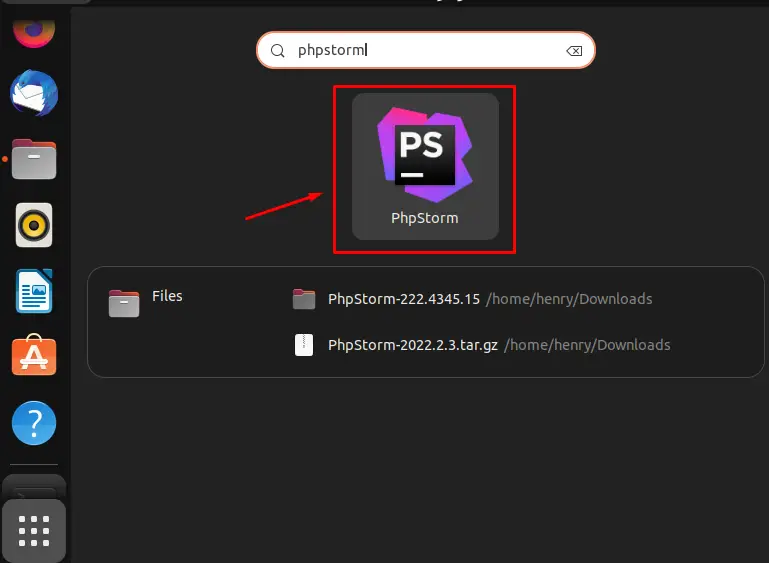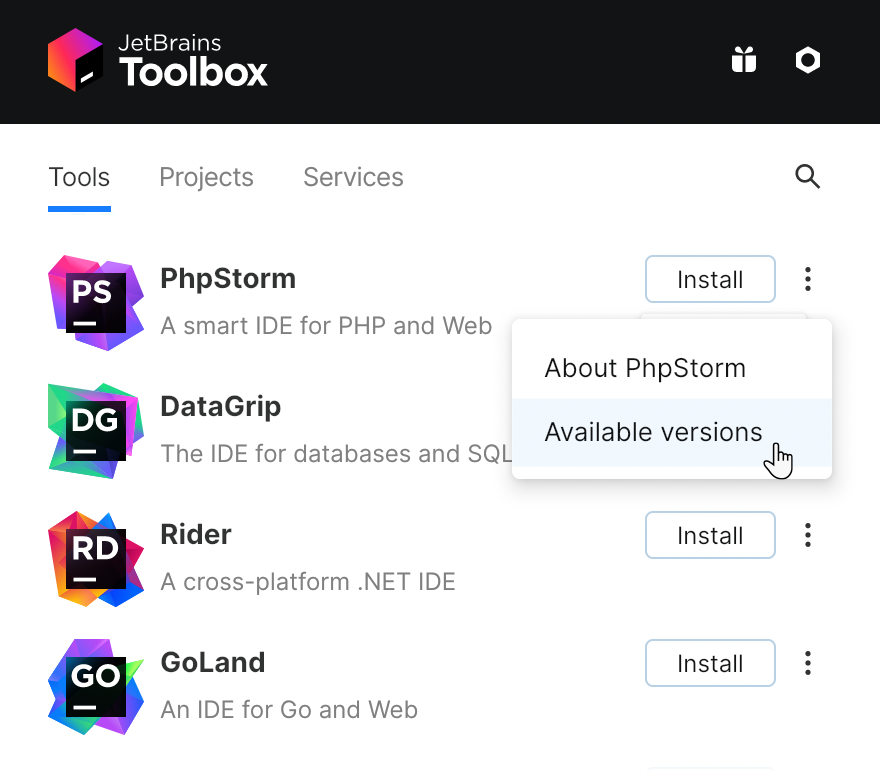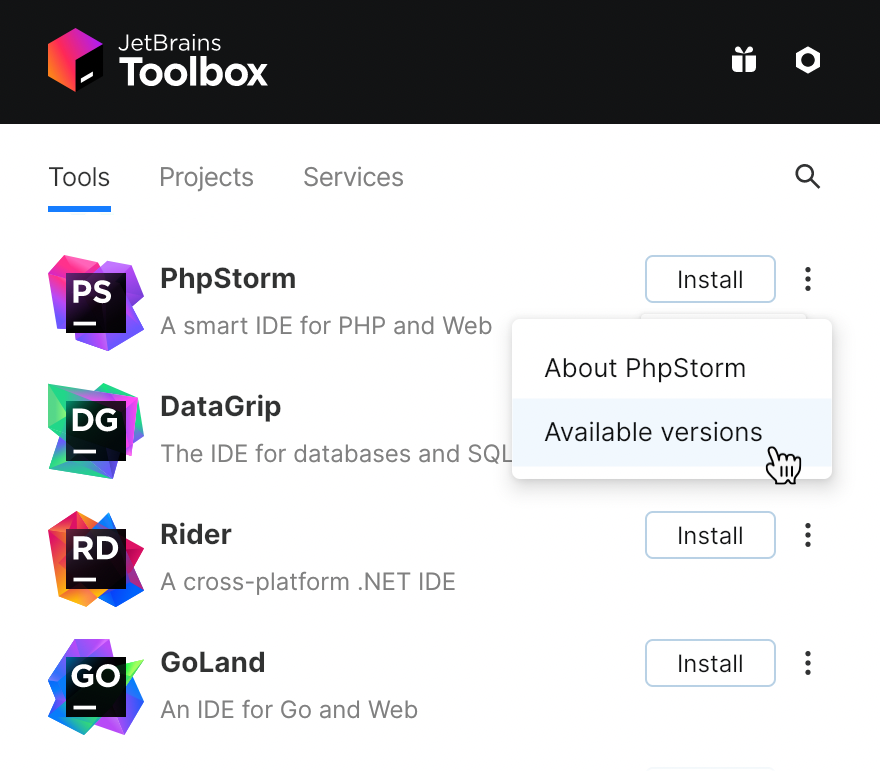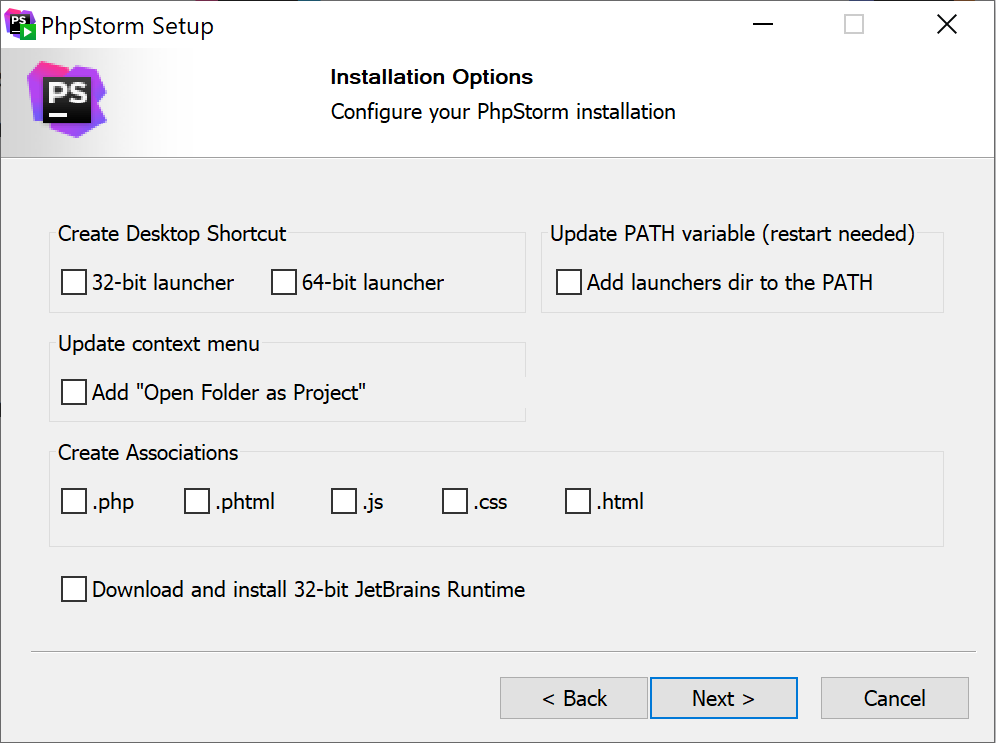- How to Install Phpstorm on Ubuntu 22.04?
- Method 1: Install PhpStorm Using Tarball (Downloaded From JetBrains)
- Remove the PhpStorm
- Method 2: Install Phpstorm Using Snap
- Method 2.1: Using CLI
- Method 2.2: Using GUI
- Remove PhpStorm Using Snap
- Conclusion
- Install PhpStorm
- System requirements
- Install using the Toolbox App
- Install the Toolbox App
- Install the Toolbox App
- Install the Toolbox App
- Standalone installation
- Silent installation on Windows
- Silent configuration file
- Install as a snap package on Linux
How to Install Phpstorm on Ubuntu 22.04?
There are multiple frameworks available for php, which give different functionalities like autocompletion and refactoring of code. Phpstorm is a cross-platform Integrated Development Environment (IDE) that provides a better experience to the developers. It is a combination of PHP, WebStorm (an IDE for JS), and SQL Databases, and thus, the functionality of PhpStorm revolves around these.
Phpstorm is not free software. Initially, it gives a free trial duration of a month. After that, users have to buy a subscription to software for further use.
This article will demonstrate the methods to install PhpStorm on ubuntu. The content for this post is given below:
Method 1: Install PhpStorm Using Tarball (Downloaded From JetBrains)
The PhpStorm support is offered by JetBrains. In this method, the source file of the PhpStorm will be obtained from the official website of JetBrains, and then it will be installed on Ubuntu 22.04. The steps to install PhpStorm are demonstrated below:
Step 1: Download the Phpstorm
Go to the website of JetBrains and download the tar.gz file available for Linux. The download link is provided below:
https://www.jetbrains.com/phpstorm/download/#section=linux
Navigating to the link will open up the following interface. Click on “Download” to get the file:
After downloading, it will appear in the “Downloads” directory:
Step 2: Extract the File
First, change the directory to the “Downloads” (or where the downloaded file is available) :
Now, extract the PhpStorm file using the following command:
$ tar -xvf PhpStorm-2022.2.3.tar.gz
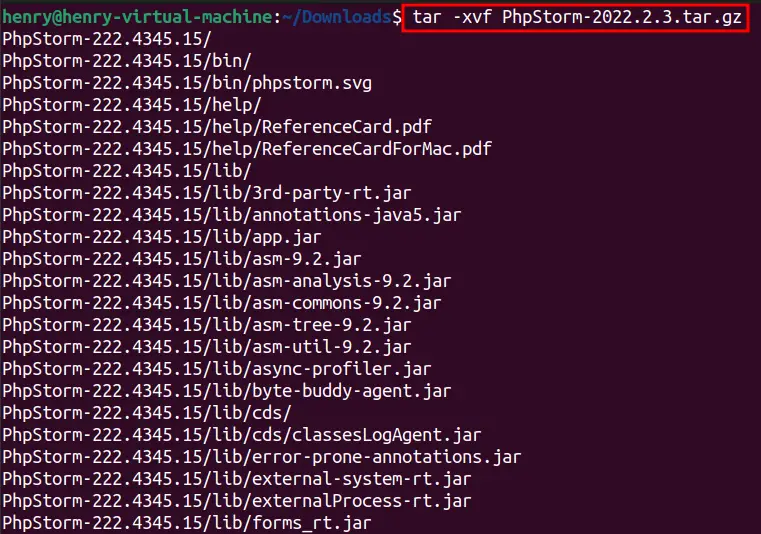
The file will be extracted in the same directory:
Step 3: Execute the Script
Go to the bin directory of the extracted file by using the cd command:
Inside that directory, there is a bash script named “phpstorm.sh”. Execute that script:
This script will launch the PhpStorm necessary setup.
Accept the license agreement to launch the PhpStorm:

Below is the interface image of PhpStorm:
Note: When this article was written, PhpStorm’s latest version was 2022.2.3. Users can check it from the website for newer or older versions of PhpStorm.
Remove the PhpStorm
If the PhpStorm is downloaded from the tarball as in this method. Then, you need to either delete the “bash script” or the whole extracted directory to remove the PhpStorm.
To remove only the bash script, in our case, we are inside the location of the bash script. So, using the following command, the bash script is removed:
To remove the whole directory:
$ sudo rm -r PhpStorm-222.4345315
In your case, the directory name could be different. So, you need to execute the command as per your directory name.
Method 2: Install Phpstorm Using Snap
Another method to install PhpStorm is by using the snap support of Ubuntu 22.04. This method can be performed using both CLI and GUI. Let’s perform these methods.
Method 2.1: Using CLI
Open the terminal and run the following command:
$ sudo snap install phpstorm --classic
The output shows that the PhpStorm has been successfully installed on the system.
Method 2.2: Using GUI
Open the Ubuntu Software Center:
Click on the search button and type the PhpStorm in the search bar. Then, click on the PhpStorm software that is displayed below:
Now, click on the “Install” button to install the PhpStorm:
After that, authenticate the installation process by providing the user password:
Doing so, the PhpStorm will be installed, and it can be verified by searching it from the applications menu:
These are the methods to install PhpStorm on Ubuntu.
Remove PhpStorm Using Snap
To remove the PhpStorm (if it is installed from snap), run the following command:
$ sudo snap remove phpstorm
Conclusion
To install PhpStorm, there are two methods using the tarball and snap packages. In the tarball method, the PhpStorm file is downloaded, and the installation script is executed to use PhpStorm. While in the snap method, users can use the command “sudo snap install phpstorm” to install it or can use the GUI support of snap as well. From this post, you have learned to install PhpStorm on Ubuntu 22.04 via multiple methods.
Install PhpStorm
PhpStorm is a cross-platform IDE that provides consistent experience on the Windows, macOS, and Linux operating systems.
System requirements
Multi-core CPU. PhpStorm supports multithreading for different operations and processes making it faster the more CPU cores it can use.
SSD drive with at least 5 GB of free space
Officially released 64-bit versions of the following:
- Microsoft Windows 10 1809 or later Windows Server 2019 or later
- macOS 10.15 or later
- Any Linux distribution that supports Gnome, KDE , or Unity DE. PhpStorm is not available for the Linux distributions that do not include GLIBC 2.27 or later.
Pre-release versions are not supported.
Latest 64-bit version of Windows, macOS, or Linux (for example, Debian, Ubuntu, or RHEL)
You do not need to install Java to run PhpStorm because JetBrains Runtime is bundled with the IDE (based on JRE 17).
Install using the Toolbox App
The JetBrains Toolbox App is the recommended tool to install JetBrains products. Use it to install and manage different products or several versions of the same product, including Early Access Program (EAP) and Nightly releases, update and roll back when necessary, and easily remove any tool. The Toolbox App maintains a list of all your projects to quickly open any project in the right IDE and version.
Install the Toolbox App
- Download the installer .exe from the Toolbox App web page.
- Run the installer and follow the wizard steps.
- After you run the Toolbox App, click its icon in the notification area and select which product you want to install. To install a specific version, click and select Available versions .
Log in to your JetBrains Account from the Toolbox App, and it will automatically activate the available licenses for any IDE that you install.
Install the Toolbox App
- Download the disk image .dmg from the Toolbox App web page. There are separate disk images for Intel and Apple Silicon processors.
- Mount the image and drag the JetBrains Toolbox app to the Applications folder.
- After you run the Toolbox App, click its icon in the main menu and select which product you want to install. To install a specific version, click and select Available versions .
Log in to your JetBrains Account from the Toolbox App, and it will automatically activate the available licenses for any IDE that you install.
Install the Toolbox App
- Download the tarball .tar.gz from the Toolbox App web page.
- Extract the tarball to a directory that supports file execution. For example, if the downloaded version is 1.17.7391, you can extract it to the recommended /opt directory using the following command:
Log in to your JetBrains Account from the Toolbox App, and it will automatically activate the available licenses for any IDE that you install.
If you installed PhpStorm via the Toolbox App, you can find the installation directory in the app: open the settings of the IDE instance in the Toolbox App, expand Configuration and look for the Install location field.
Standalone installation
Install PhpStorm manually to manage the location of every instance and all the configuration files. For example, if you have a policy that requires specific install locations.
- Download the installer .exe . There is a separate installer for ARM64 processors.
- Run the installer and follow the wizard steps. On the Installation Options step, you can configure the following:
- Create a desktop shortcut for launching PhpStorm.
- Add the directory with PhpStorm command-line launchers to the PATH environment variable to be able to run them from any working directory in the Command Prompt.
- Add the Open Folder as Project action to the system context menu (when you right-click a folder).
- Associate specific file extensions with PhpStorm to open them with a double-click.
To run PhpStorm, find it in the Windows Start menu or use the desktop shortcut. You can also run the launcher batch script or executable in the installation directory under bin .
- Download the disk image. There are separate disk images for Intel and Apple Silicon processors.
- Mount the image and drag the PhpStorm app to the Applications folder.
Run the PhpStorm app from the Applications directory, Launchpad, or Spotlight.
- Download the tarball .tar.gz . There is a separate tarball for ARM64 processors.
- Extract the tarball to a directory that supports file execution. For example, to extract it to the recommended /opt directory, run the following command:
Do not extract the tarball over an existing installation to avoid conflicts. Always extract it to a clean directory.
Execute the PhpStorm.sh script from the extracted directory to run PhpStorm.
To create a desktop entry, do one of the following:
- On the Welcome screen, click Configure | Create Desktop Entry
- From the main menu, click Tools | Create Desktop Entry
When you run PhpStorm for the first time, you can take several steps to complete the installation, customize your instance, and start working with the IDE.
For information about the location of the default IDE directories with user-specific files, see Directories used by the IDE.
Silent installation on Windows
Silent installation is performed without any user interface. It can be used by network administrators to install PhpStorm on a number of machines and avoid interrupting other users.
To perform silent install, run the installer with the following switches:
- /S : Enable silent install
- /CONFIG : Specify the path to the silent configuration file
- /D : Specify the path to the installation directory This parameter must be the last in the command line, and it should not contain any quotes even if the path contains blank spaces.
To check for issues during the installation process, add the /LOG switch with the log file path and name between the /S and /D parameters. The installer will generate the specified log file. For example:
PhpStorm-*.exe /S /CONFIG=d:\temp\silent.config /LOG=d:\JetBrains\PhpStorm\install.log /D=d:\IDE\PhpStorm
Silent configuration file
You can download the default silent configuration file for PhpStorm at https://download.jetbrains.com/webide/silent.config
The silent configuration file defines the options for installing PhpStorm. With the default options, silent installation is performed only for the current user: mode=user . If you want to install PhpStorm for all users, change the value of the installation mode option to mode=admin and run the installer as an administrator.
The default silent configuration file is unique for each JetBrains product. You can modify it to enable or disable various installation options as necessary.
It is possible to perform silent installation without the configuration file. In this case, omit the /CONFIG switch and run the installer as an administrator. Without the silent configuration file, the installer will ignore all additional options: it will not create desktop shortcuts, add associations, or update the PATH variable. However, it will still create a shortcut in the Start menu under JetBrains .
Install as a snap package on Linux
You can install PhpStorm as a self-contained snap package. Since snaps update automatically, your PhpStorm installation will always be up-to-date.
To use snaps, install and run the snapd service as described in the installation guide.
On Ubuntu 16.04 LTS and later, this service is pre-installed.
PhpStorm is distributed via two channels:
- The stable channel includes only stable versions. To install the latest stable release of PhpStorm, run the following command:
When the snap is installed, you can launch it by running the phpstorm command.
To list all installed snaps, you can run sudo snap list . For information about other snap commands, see the Snapcraft documentation.
